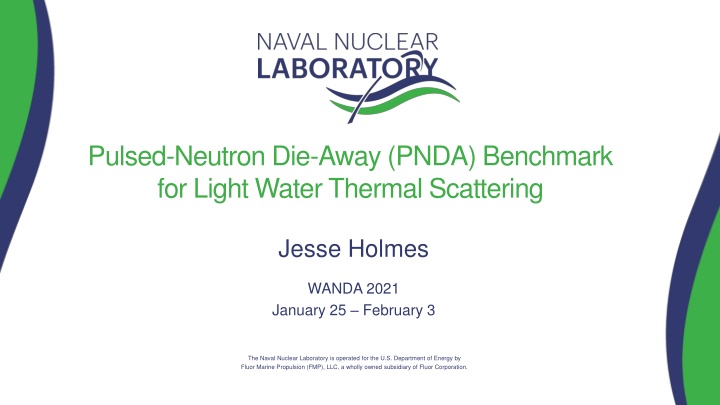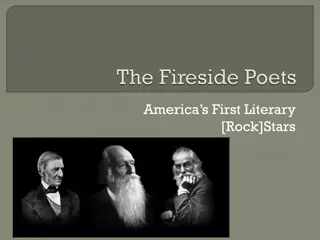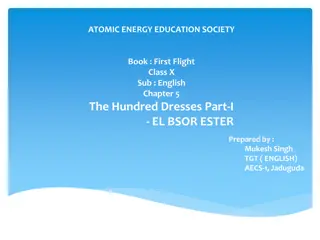
Pulsed-Neutron Die-Away (PNDA) Benchmark for Light Water Thermal Scattering
Explore the Pulsed-Neutron Die-Away (PNDA) benchmark experiment involving the interaction of 14 MeV neutrons with water, providing insights into thermal and spatial equilibrium, neutron flux behavior, and sensitivity to scattering properties. Discover how this experiment offers a cost-effective approach for validating data and modeling thermal scattering effects.
Download Presentation

Please find below an Image/Link to download the presentation.
The content on the website is provided AS IS for your information and personal use only. It may not be sold, licensed, or shared on other websites without obtaining consent from the author. If you encounter any issues during the download, it is possible that the publisher has removed the file from their server.
You are allowed to download the files provided on this website for personal or commercial use, subject to the condition that they are used lawfully. All files are the property of their respective owners.
The content on the website is provided AS IS for your information and personal use only. It may not be sold, licensed, or shared on other websites without obtaining consent from the author.
E N D
Presentation Transcript
Pulsed-Neutron Die-Away (PNDA) Benchmark for Light Water Thermal Scattering Jesse Holmes WANDA 2021 January 25 February 3 The Naval Nuclear Laboratory is operated for the U.S. Department of Energy by Fluor Marine Propulsion (FMP), LLC, a wholly owned subsidiary of Fluor Corporation.
Proposed ICSBEP Volume IX Fundamental Physics Experiment PNDA Experimental Description (Nassar and Murphy, NSE, Vol. 35, 1969) Pulse of 14 MeV neutrons (D+T generator) incident upon 295 K H2O in spherical Pyrex flasks of various radii, surrounded by cadmium. Thermal neutron count rate was recorded as a function of time. Once thermal and spatial equilibrium is established, the neutron flux follows the form ? ?,? = ?0? ? ??, where ? is the fundamental mode time eigenvalue calculated from the recorded count rate data. Measured ? is a function of radius (geometric buckling), absorption, and integral and differential thermal scattering cross sections. Sensitivity to thermal scattering in H2O, as well as differential scattering cross sections, increases with decreasing radius. The primary source of experimental uncertainty is counting statistics. The experiment is simple to model and the ? results depend only the absorption and thermal scattering characteristics of H2O. PNDA experiments of this type can be an inexpensive alternative to critical experiments for validation of TSL data. 2
MC21 PNDA Modeling Results vs. Nassar and Murphy Experiment Radii of spheres Y-intercept of trajectory lines is determined by absorption only. Slope of trajectory lines is determined by H2O thermal scattering cross sections. Free gas treatment gives similar results to using H2O TSLs for larger systems ( > ~10 cm radius). Uncertainty bars shown are experimental. MC21 statistical uncertainty is negligible. 3
MC21 PNDA Modeling Results vs. Nassar and Murphy Experiment Difference primarily due to ENDF/B-VIII.0 H thermal absorption cross section being slightly higher than -VII.1 Difference primarily due to different water TSLs employed Very sensitive to thermal scattering Insensitive to thermal scattering 4






















